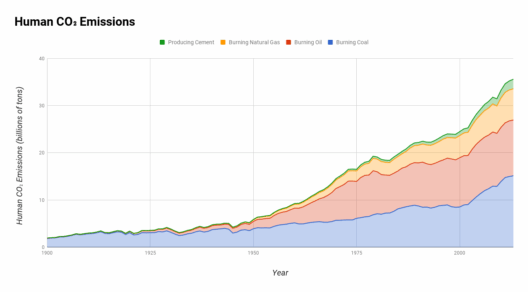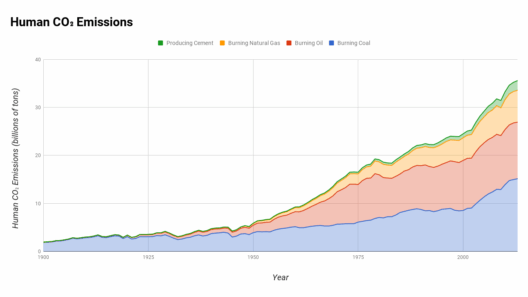The relationship between salt water and global warming is often overlooked, yet it is a subject of burgeoning relevance. As climate change escalates, the demand for water, especially in arid regions, intensifies. Consequently, desalination— the process of removing salt from seawater— emerges as a pivotal solution. However, this technological marvel is not without its intricacies, particularly when considering its environmental ramifications.
Desalination is an ancient concept that has been practiced in various forms for centuries. Modern technologies, however, allow for the conversion of seawater into potable water at an unprecedented scale. The process generally involves either thermal distillation or reverse osmosis, both of which require exorbitant amounts of energy. This is where the crossroads of desalination and global warming emerge; the energy consumption associated with desalination plants predominantly derives from fossil fuels. Therefore, an increase in desalination efforts could aggravate carbon emissions unless renewable energy sources are utilized effectively.
The sheer scale of seawater on Earth—approximately 97% of all water—compels a closer examination of desalination’s role in mitigating water scarcity. Water scarcity threatens livelihoods and ecosystems alike, contributing to geopolitical strife. By converting salt water into fresh water, desalination offers a tantalizing but double-edged sword. The immediate benefit is obvious: providing critical resources to areas affected by droughts or over-extraction of freshwater sources. Yet the link between this practice and climate change remains complex.
Consider the thermal pollution generated by desalination processes. The brine expelled back into the ocean is significantly warmer than the surrounding seawater, potentially disrupting local ecosystems. Many marine organisms are sensitive to temperature changes; thus, any alteration to their habitat raises concerns about biodiversity loss. Elevated salinity levels from brine discharge can also harm organisms that depend on specific salinity ranges for survival. The ramifications ripple throughout the food chain, ultimately affecting nutrient cycling and habitat integrity.
A common misperception is that desalination offers a foolproof solution to our water woes. However, this perception masks deeper systemic issues, such as water governance and global equity. Wealthier nations are more capable of investing in desalination technology, while poorer regions often grapple with fundamental access to cleaner water. This disparity raises moral questions, fostering a debate about the allocation of resources in the face of climate challenges.
In addition to ethical considerations, the economic implications of large-scale desalination cannot be overlooked. Desalinated water is frequently more expensive than traditional freshwater sources. This higher cost may adversely affect social equity, as marginalized communities may find themselves priced out of access to essential resources. This not only perpetuates existing inequalities but can also lead to social unrest, underscoring the need for comprehensive policies that address both environmental and social concerns.
The link between desalination and global warming also manifests through the broader perspective of ocean health. As the planet warms, seawater undergoes various changes, including thermal expansion and altered salinity levels, influencing oceanic currents and weather patterns. These shifts can affect the efficiency of desalination processes and the reliability of seawater as a source for drinking water. Consequently, rising sea levels and changing ocean characteristics may hinder the very technologies poised to alleviate water scarcity.
Interestingly, the salt extracted from the seawater during the desalination process could present unique opportunities. Salt, a mundane substance, has various applications beyond seasoning food. It has potential uses in industrial settings, including chemical manufacturing, agriculture, and even as a means to combat climate change. For example, salt can be utilized in carbon capture technologies. By exploring these alternative applications, the desalination process could transform salt into a valuable resource rather than simply a waste product.
Moreover, the conversation around desalination should also include the potential for innovative technologies that may emerge from ongoing research. Promising advancements in renewable energy sources—such as solar and wind—can reduce the carbon footprint of desalination plants significantly. Furthermore, more efficient desalination processes, involving nanotechnology or improved membrane filtration systems, could mitigate some of the adverse environmental impacts presently associated with these facilities.
Public perception plays a crucial role in shaping future investments and policies surrounding water resource management. While desalination is often met with skepticism, it is essential to engage communities and stakeholders in meaningful dialogues about its benefits and challenges. Raising awareness about its role in ensuring water security and its environmental implications could foster collaborative approaches that balance human needs with ecosystem vitality.
In conclusion, the connection between salt water and global warming invites an array of considerations that demand comprehensive evaluation. Desalination stands at the fulcrum of technological feasibility and environmental responsibility. It offers immediate relief for water scarcity—yet simultaneously raises pivotal questions about sustainability, ethical resource allocation, and the health of our oceans. Moving forward, it is vital to integrate innovative solutions, equitable policies, and a broader understanding of ecological dynamics into the conversation, ensuring that the quest for potable water does not inadvertently exacerbate the very challenges we seek to overcome.







